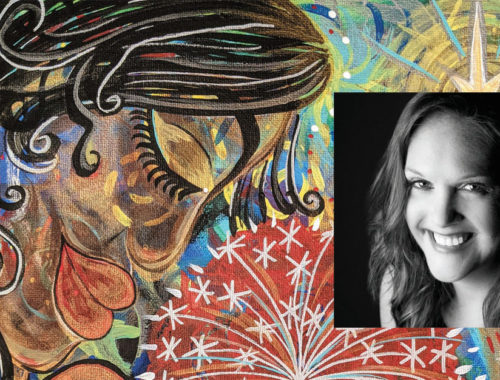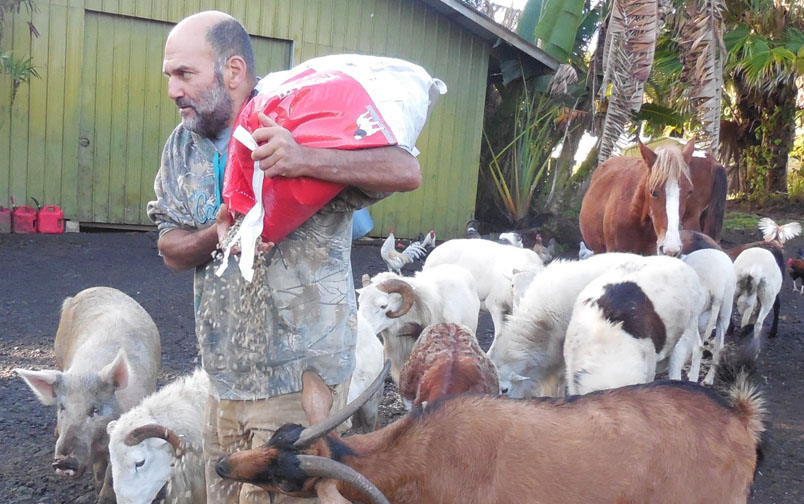
Seeger Institute at Eden Farms: Ecological Solutions to Make a Better World
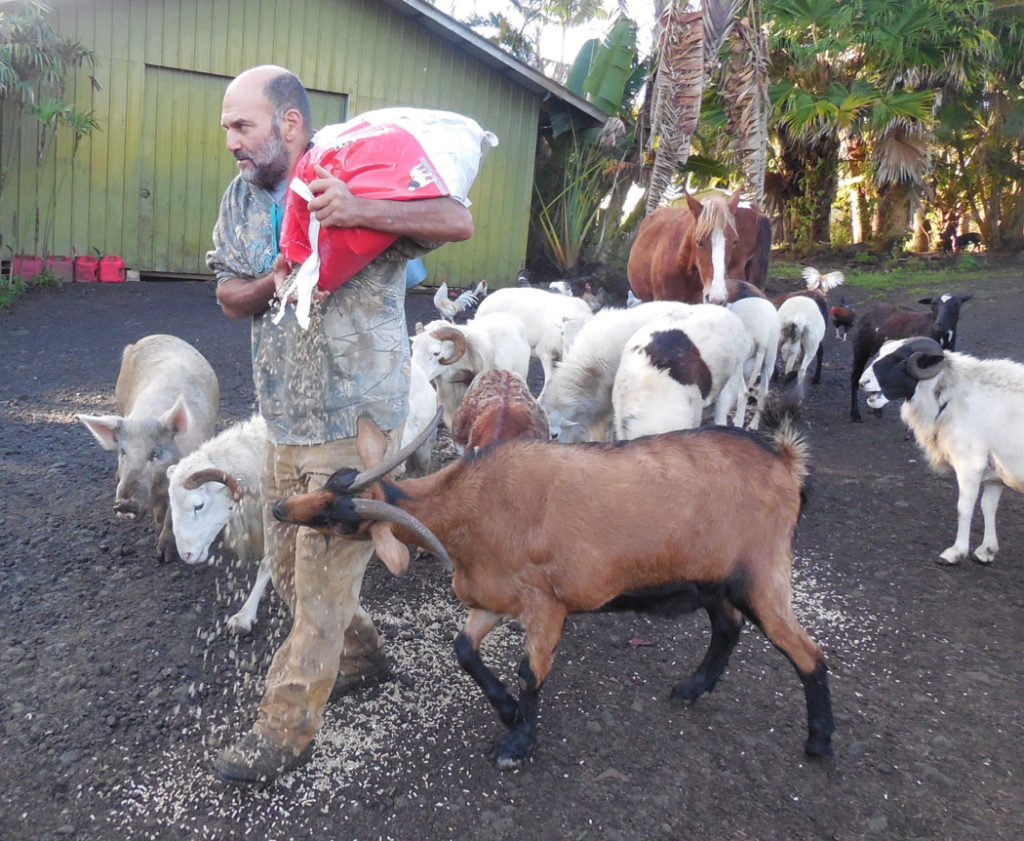
By Stefan Verbano
There is a fierce urgency in Gary Rosenbergʻs eyes. Itʻs the look of a time traveler who, after witnessing some future calamity, is sent back to warn an incredulous public to change their ways, often with great effort and futility.
For Gary, the crisis heʻs seen—albeit only in his well-informed imagination—is an ecological one. He loses sleep at night pondering the toxic aspects of modern humans’ relationship with nature in general, and food in particular—from fossil fuel dependence to factory farming, monoculture crops to GMOs, air and water pollution, landfills, soil erosion, loss of habitat, health, and community—his list goes on and on. This awareness has borne in him an obsession, a neurosis even, with finding ecologically-sound solutions to these problems. Such urgency seems to give him boundless energy because he’s always moving, talking and thinking fast—there’s no time to waste when you’re staring down doom—working seven days a week from dawn till dusk, managing one big biotechnology field test.
“Iʻm crying bloody murder and people think I’m crazy and tell me to calm down,” Gary says, that look in his eyes flaring up again. “I can’t calm down! Right now, we are undergoing the greatest transition in human history, and it’s either adapt or die.”
Fifteen years ago, this obsessive search for a better way drove him from the relative comfort of his urban farm in Berkeley, California to East Hawai‘i, where he purchased 38 acres of land on the flank of Kīlauea Volcano and started the long and at times arduous process of building a one-of-a-kind teaching farm, animal sanctuary, and agricultural research station on a hilly plot of old sugarcane field above Kurtistown.
The land was called Eden Farms, and Gary’s brainchild there was the Seeger Institute—an off-grid, biodiverse higher education learning center named in honor of the legendary folk singer and environmental activist Pete Seeger.
Horses were the institute’s first animal residents, purchased around the same time as the land, but the majority of sheep, mules, goats, cows, pigs, ducks, turkeys, geese, chickens, and bees roaming freely around its campus today found sanctuary there after being displaced by the 2018 Lower Puna Eruption.
Teamwork in Action
To help him work the land and care for the animals, the Berkeley transplant enlisted a team of inspired young people who feel the same urgency he does. He built simple yet comfortable cabins complete with solar panels and rain catchment tanks to house those opting to live on the farm. Other staff members stay in the surrounding neighborhoods of Volcano, Mountain View, and Kurtistown, and drive along the one-lane potholed road past tropical flower farms and fenced pastureland to work at the institute.
Those living on the land get up at first light, dress against the cold morning mountain air, cook food on wood-burning rocket stoves and with methane produced through bio-digestion, and seem to spend most of their time simply keeping the wandering throngs of various farm animals fed. Words like “inputs,” “resources,” “efficiency,” and “distribution” abound in their everyday conversations—even more so on Monday evenings when the whole staff gathers around three plastic folding tables inside one of the barns and holds their weekly dinner meeting, while a soup cauldron bubbles away in the corner.
When building his team, Gary seems to place a greater premium on passion than experience. People with little agricultural background are entrusted with great responsibilities. Rodolf Pan, for example, is Seeger Institute’s agriculture manager, but has only been in the position for seven months, and prior to moving onto the land was living in the city on O‘ahu where the closest he could get to farming was growing vegetables in humble porch planters. Learning as he went, Rodolf is now in charge of a half-dozen one-acre organic food fields—all numbered—and two massive greenhouses the size of small airplane hangars overflowing with squash, tomatoes, chili peppers, and stout papaya trees boasting football-sized fruit.

“Mother Nature will take it in her own course,” Rodolf says while standing at the top of Food Field Four, overlooking his offset rows of newly transplanted soursop, coffee, rollinia, and kukui nut. “We don’t know what itʻs going to look like.”
Early the next morning, Rodolf is in one of the greenhouses pulling out trays of sprouted wheatgrass seeds. He loads them into the bed of his ATV and drives up the hill to the sprawling poultry coop to bring the birds their breakfast. Rather than filling feeders with straight seeds, he explains, at Eden Farms they take the extra step of sprouting the seeds in order to increase their nutritional and caloric value and get the most bang for the carbon buck.
“We start out with a 50-pound bag of seed shipped in from the mainland, and we turn it into hundreds of pounds of food for them,” he says while laying trays of grass on the coop floor as the birds swarm all around.
James Morgan is the institute’s soil manager, who joined Rodolf that afternoon in Food Field Four to take a soil sample from underneath a kukui nut sapling. He used a trowel to scoop some soil into a reused plastic cottage cheese container and headed off to the instituteʻs mushroom barn to set up the microscope. After diluting the sample with water and stirring it into mud, he uses an eyedropper to place a few drops on a slide and then positions it under the lens.
“It’s sort of like snorkeling…but underground,” James jokes while adjusting the focus.
Once his setup is complete, he peers through the eyepiece hoping to see white weblike flecks of mushroom mycelium and the wriggle of living beneficial microorganisms.
“There are these little key indicators of their growth that kind of tell the story for me,” James says without taking his eyes off the slide. “There’s definitely diversity here, just not as much fungus as weʻd like to see.”
James draws on his impressive understanding of microbiology and biochemistry to explain the science behind agro-innovations like fungiculture, worm composting, and growing black soldier fly larvae to use as animal feed. He sees his role at the institute as helping to make promising biotechnologies like these more accessible for even the most inexperienced hobby gardener.
“We want to be doing things here that the average homeowner can do,” James says. “If it’s not easy and it’s not somewhat fun, it’s not going to happen.”
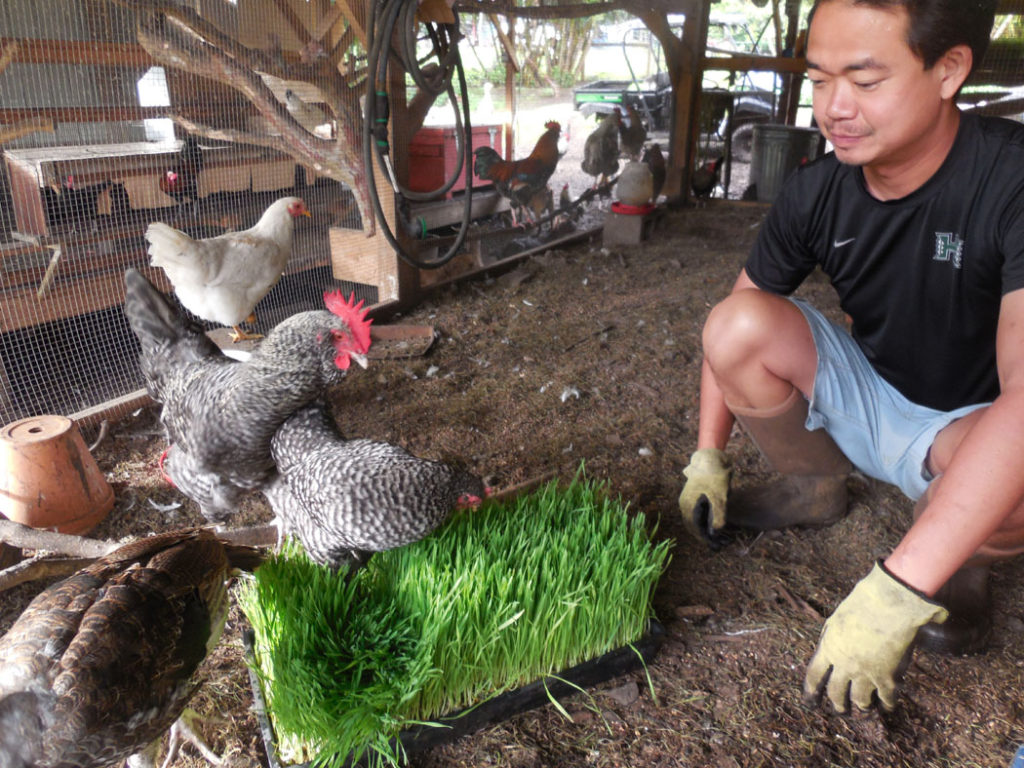
Remembering a Hero
While Rodolf is laying out trays of sprouted wheatgrass in one section of the poultry coop, Gary is in another close by scooping poop. His broom makes its way across plywood floors, sweeping what will no doubt soon be potent fertilizer into little mounds.
As he sweeps, he tells the story of meeting Pete Seeger as a 15-year-old at the annual Great Hudson River Revival folk music festival in upstate New York in 1980. Gary was living and working on a sailboat on the Hudson named Clearwater, which itself has intimate ties to the festival, and was just starting to develop what would become a lifelong passion for music.
Early in the morning before the start of the festival, Gary was strolling across the fairgrounds and happened upon Pete setting up his tent. The folk singer, by this time in his 60s with most of his famous works behind him, asked Gary to sing him a song. Pete stepped back into his tent to fetch guitar and banjo, and the two played together long enough for a small crowd to gather.
And then, as if on cue, present-day Gary with his dirty Carhartts and camo-print sweatshirt breaks into an a cappella rendition of the song he sang to Pete that morning—Seeger’s “Putting on the Style”—with poop broom in hand, stepping to the tune in time around the dingy coop, belting out each note in minstrel fashion.
“Pete never stopped working,” he says about his beloved folk hero after finishing the last line. Seeger passed away in 2014. “Everybody did what Pete wanted them to do because he was everybodyʻs grandfather. Everyone knew the debt they owed him.”
As for how 38 acres of old East Hawai‘i sugarcane land came to bear his name, Gary, who is quickly approaching the age Seeger was on that most memorable day in 1980, puts it simply:
“Pete was on the right side of the battle for his entire life,” he says. “Every song, every word, every gesture had the intention of trying to bring people to an understanding that together we can make a better world.” ❖
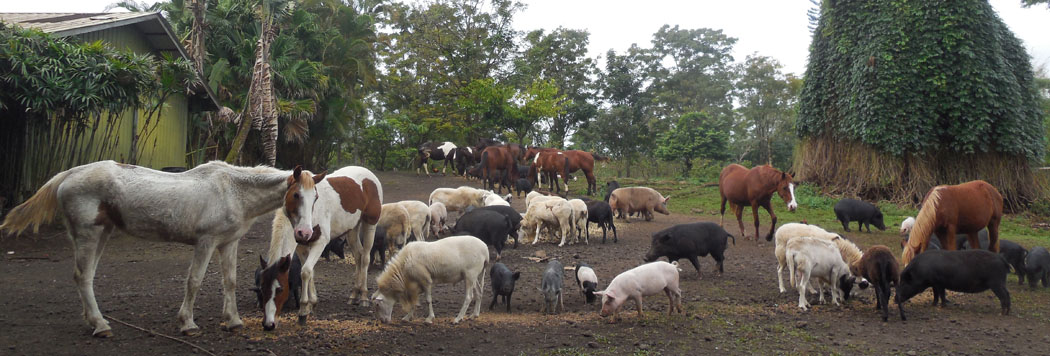
For more information: seegerinstitute.com
All photos by Stefan Verbano


